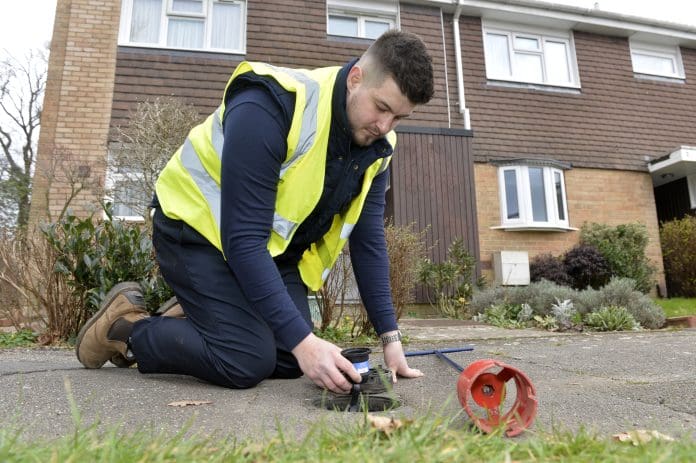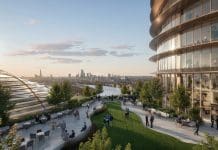
Residential and commercial developers need to be aware of water neutrality and make sure they have strategies in place, says Caroline Gray Mason of Cenergist
Nutrient neutrality recently made headlines following the government’s announcement that local authorities (LAs) will no longer have to consider Natural England’s nutrient pollution requirements in planning applications.
Although ultimately rejected by the upper house, the move was welcomed by developers, who continue to push for a relaxation of the rules. Doing so will help deliver more than 150,000 new homes that have ground to a halt in the planning process.
Across the country, nutrient neutrality represents a significant environmental challenge for developers navigating the planning process. However, there is another environmental issue that developers need to get on the front foot now: water neutrality.
What do we mean by water neutrality?
Developers are increasingly considering mitigating a building’s potential negative environmental impact.
Whereas nutrient neutrality aims to mitigate waterway pollution by addressing the quality of water generated through building use and occupation, water neutrality concerns the amount of water used.
Water neutrality can be defined as: “For every new development, water demand should first be minimised, then any remaining water demand offset so that the total demand on the public water supply in a defined region is the same after development as before.”
Water neutrality will become more relevant to developers
Water neutrality requirements are currently highly localised, and there are concerns about developments surrounding the Arun Valley in the southeast of England.
Requirements for LAs in these regions were laid down after Natural England identified that groundwater abstraction coupled with lower overall water availability has a negative ecological impact.
However, when considering the country’s water scarcity crisis, localised water neutrality mandates in the South East represent the tip of the iceberg.
Alarming statistics highlight the scale and urgency of the challenge. Research conducted by Kingfisher, the owner of Screwfix and B&Q, shows that seven regions in England are at risk of running dry by 2030.
Factors contributing to water scarcity include population growth, successive prolonged periods of low rainfall and lack of personal responsibility with water consumption.
Consequently, water neutrality will likely become a more prevalent requirement from LAs across the country. This potentially makes it as great of a barrier to development planning as nutrient neutrality and a significant challenge that many developers have yet to navigate.
Navigating the first step for water neutrality strategies
Despite the well-known factors contributing to the water scarcity crisis, no new reservoir will come online until 2029. The absence of large-scale infrastructure projects highlights the onus on developers to consider water efficiencies and get proactive now with water neutrality strategies.
In areas where there are currently water neutrality mandates for a development to proceed, strategies must display precise, credible and deliverable means to achieve water neutrality.
Put simply, this comprises water efficiency, water recycling and offsetting measures and includes a water budget showing details of baseline and proposed water consumption.
The first step in navigating a water neutrality strategy means considering how best to reduce water per capita consumption (PCC) that comes with building use and occupation.
Like energy efficiency, water efficiency technologies are available to developers to reduce PCC and achieve water neutrality.
However, in the face of already tough requirements, which could evolve to become more widespread and stringent, readily available solutions that deliver proven, large-scale reductions in PCC are required. This will help developers mitigate potential delays.
Achieving this means turning to solutions such as Control Flow that provide efficiency by design with a building’s utility infrastructure.
“Efficiency by design” approach to building water use
While specially designed fixtures and fittings such as toilets, taps and showerheads mitigate PCC, solutions that work more closely with a building’s utility infrastructure have the potential to provide the water savings required.
Control Flow solutions generate large-scale PCC reductions by improving the efficiency of the entire cold and hot water system in the property.
They are also available for existing properties, which are retrofitted as part of a turnkey approach and do not require a “rip and replace” of existing infrastructure.
With a 10-year lifespan, they can be installed at various points throughout a development onto existing piping and inline, mitigating removal risk.
Field deployments have shown daily PCC drops ranging from 30 litres for an individual to 73-litre reductions for a household.
Importantly, when Natural England reviews water neutrality strategies, developers accept a PCC reduction of 27 litres per day where a Control Flow product is fitted.
Pursuing an “efficiency by design” approach with solutions that deliver double-digit water savings means developers will have taken a crucial first meaningful step towards tackling the water scarcity crisis.
Staying ahead of future challenges
Although nutrient neutrality currently dominates the agenda, with the ongoing water scarcity crisis, it will be no surprise if it becomes a more widespread environmental mandate, risking development progress.
What’s important now is for residential and commercial developers to be aware of the issues and the readily available solutions, such as Control Flow, that deliver the tangible savings required.
By doing so, they will have embraced the opportunity to get on the front foot while delivering more efficient properties.

Caroline Gray Mason
Business development director – water
Cenergist





![[VIDEO]Government launches new online appeal service for local planning authorities Group of young coworkers using computers in their group office, representing the new online appeals service](https://www.pbctoday.co.uk/news/wp-content/uploads/2025/12/iStock-2191280160-218x150.jpg)







